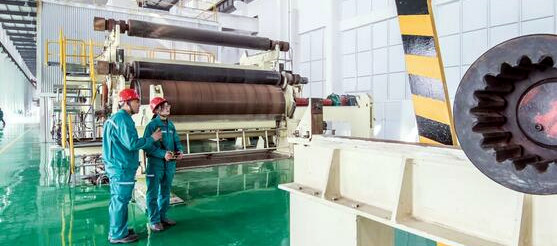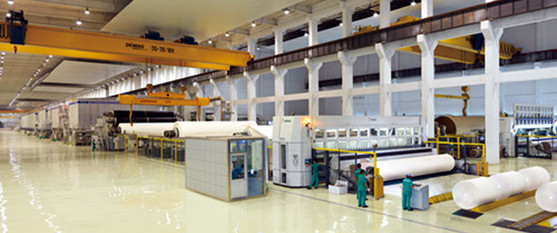Abstract: This article discusses in detail the important role of sodium carboxymethylcellulose (CMC) in the paper industry. As a common papermaking additive, CMC has a significant impact on improving paper quality and production efficiency. Through the analysis of the characteristics and applications of CMC, its specific role in enhancing paper strength, improving slurry properties, and improving coating effects is explained. In addition, the application prospects and development trends of CMC in the paper industry are also discussed.
I. Introduction
Sodium carboxymethylcellulose (CMC) is a water-soluble polymer compound obtained by chemical modification of cellulose. It has the characteristics of good water solubility, thickening, stability and adhesion, and is widely used in various fields, especially in the paper industry, which plays an irreplaceable role.
2. Characteristics of sodium carboxymethylcellulose
CMC is usually a white or slightly yellow powder, tasteless and odorless, easily soluble in water, and forms a transparent viscous solution. Its molecular chain contains a large number of carboxyl and hydroxyl groups, which can form hydrogen bonds with water molecules, thus having good water solubility and hygroscopicity. In addition, CMC has high viscosity and stability, maintaining consistent performance over a wide pH range.

3. The role of sodium carboxymethylcellulose in papermaking
(1) Enhance paper strength
Adding CMC can increase the interfiber bonding force of paper and improve the paper's physical properties such as tensile strength, bursting strength and tear strength. This is very important for making high quality paper.
(2) Improve slurry performance
CMC has good rheological properties, which can improve the fluidity and suspension stability of the slurry, making it easier to transport and distribute the slurry during the papermaking process, thus improving the efficiency and quality of papermaking.
(3) Improve coating effect
In the paper coating process, CMC can be used as an adhesive and rheology regulator to improve the adhesion and uniformity of the coating layer and improve the surface properties of the paper, such as gloss, smoothness and printability.
(4) Enhance the water resistance and oil resistance of paper
CMC can form a protective film on the surface of the paper to reduce the penetration of water and oil, improve the water resistance and oil resistance of the paper, and make the paper more durable in various usage environments.
4. Precautions for application of carboxymethyl cellulose sodium
When using CMC, it is necessary to reasonably select the model and amount of CMC based on factors such as paper type, quality requirements, and production technology. At the same time, attention should be paid to the compatibility of CMC with other papermaking additives to avoid adverse interactions. In addition, the quality and stability of CMC also have an important impact on the papermaking process and product quality. Therefore, products with reliable quality should be selected and their use conditions should be strictly controlled.

5. Conclusion
Sodium carboxymethyl cellulose plays an important role in many aspects of the paper industry. It can improve the strength of paper, improve slurry properties, improve coating effects, and enhance the water and oil resistance of paper. With the continuous development of papermaking technology and changes in market demand, the application prospects of CMC in the papermaking industry will be broader, and at the same time, higher requirements will be placed on its performance and quality. In the future, researchers will continue to work on developing CMC products with better performance and greater adaptability to meet the needs of the continuous development and innovation of the paper industry.
Lude Chemical R&D Department
March 22, 2024